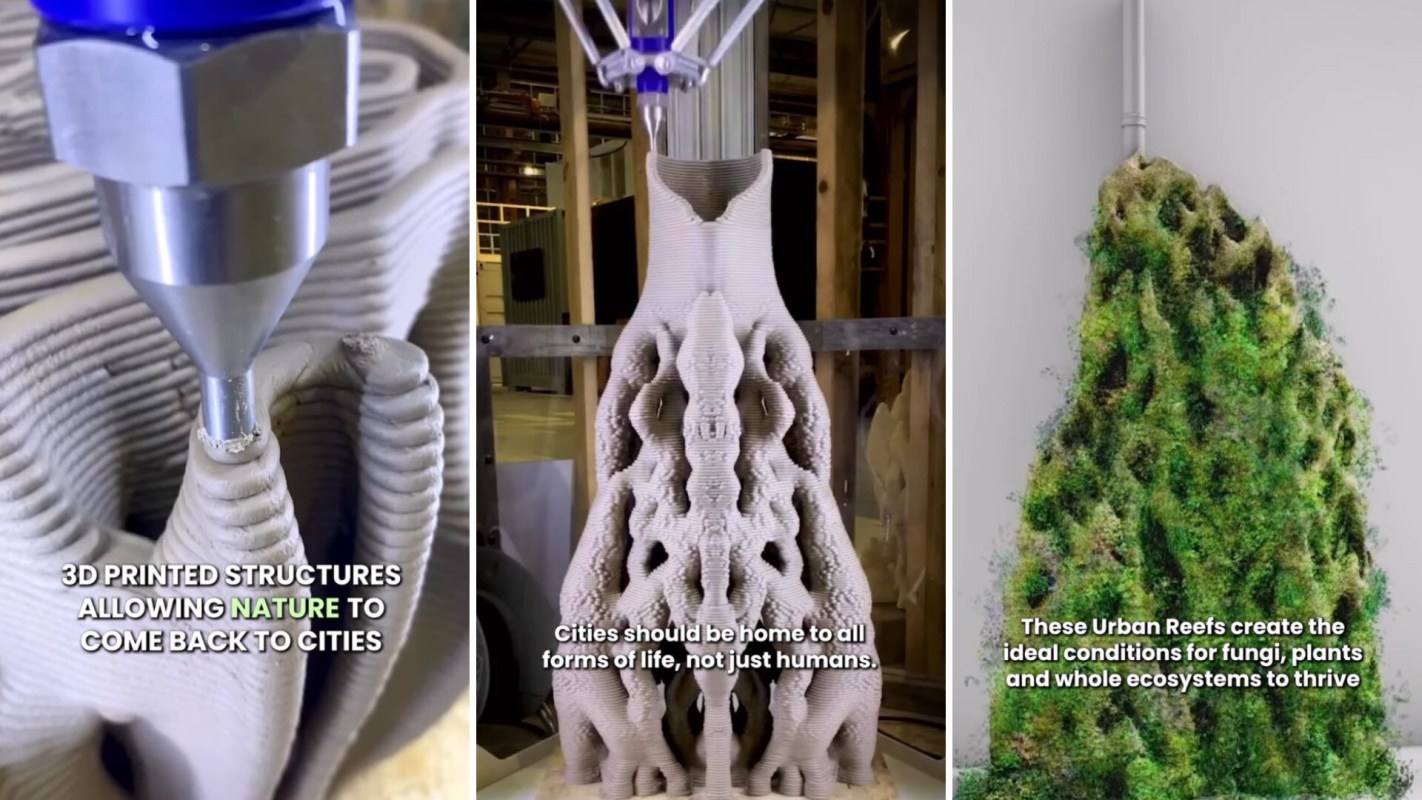Urban Reef, a design firm in Rotterdam, Netherlands, is aiming to liven up urban cities.
As its website states, the company — which is focused on research and design for climate adaptation, water circularity, and biodiversity within the built environment — takes that literally by creating "habitats that encourage the growth and diversity of multiple species in urban settings."
As showcased in an Instagram post by Ben & Ciara (@goinggreenmedia), the so-called "reefs" have a complex geometry designed using an algorithm and 3D-printed with porous materials, including mycelium, river dredge, sea shells, and clay.
These materials allow moisture to pass through and create the perfect environment for organisms to grow. They also help disconnect drainage pipes, allowing rainwater to stay within the local ecosystem.
While the designs are not meant to replace trees or other types of nature, they are allowing nature to come back to cities. The reefs are meant to be put where trees can't be planted, like on thin rooftops and cemented areas.
Urban Reef was founded by landscape architect Pierre Oskam and computational designer and architect Max Latour. Oksam initially got the idea while in Portugal, earning his Ph.D. in ecological design.
He told Holland.com, "There were a lot of vacant buildings in the city of Porto and in the countryside. The plants that I saw there simply seemed to appear on their own, and this provided them with a good chance of survival. A city consists of different micro-climates, and I wondered whether that was something that we could reinforce."
Latour said on Holland.com that he and Oksam "create natural conditions in the city using design tools based on natural processes." While the reefs are similar to living walls, their unique design by 3D printing allows them to be integrated into cities without human intervention.
Not only are these reefs cool to look at, but they could also go a long way in helping to cool down the planet. Plants absorb harmful carbon pollution in the air, and the reduction of these toxins creates a cooling effect. Plants also cool the atmosphere by releasing water vapor when they get hot, a process similar to sweating in humans.
Adding them to places where there are not a lot of trees or other nature could help solve the problem of heat islands.
Also, while most 3D printing uses plastic, these structures use organic materials, which makes their 3D printing process even more sustainable.
The reefs are still in the research and prototype phase, with two models — the "Zoo Reef" and the "Rain Reef" — currently in the works. Oskam and Latour, however, are certain that the project will have real-world applications in the future.
The duo told DesignWanted, "At Urban Reef we consider the city as a potential habitat to organisms, not exclusively humans … We position ourselves as human within the natural environment deviating from the modernist view of the human transcending nature."
Join our free newsletter for weekly updates on the coolest innovations improving our lives and saving our planet.









